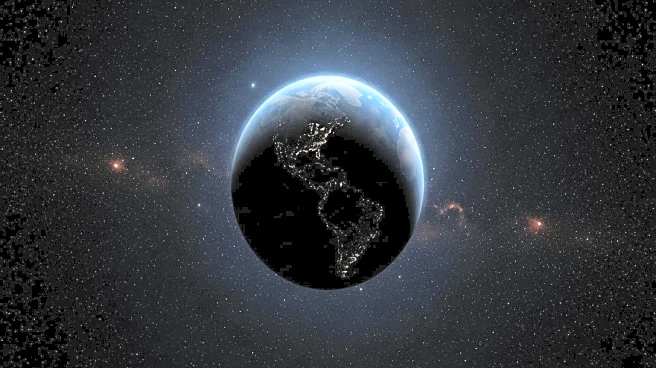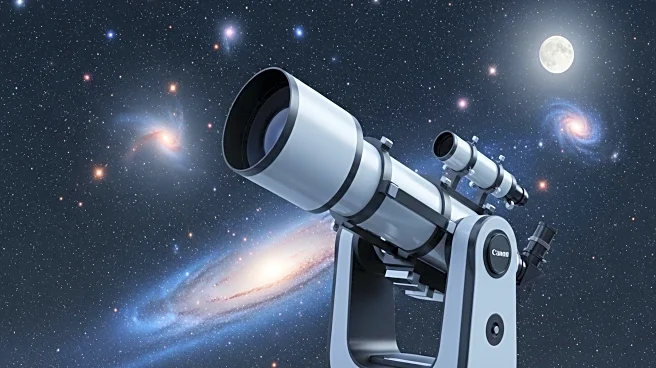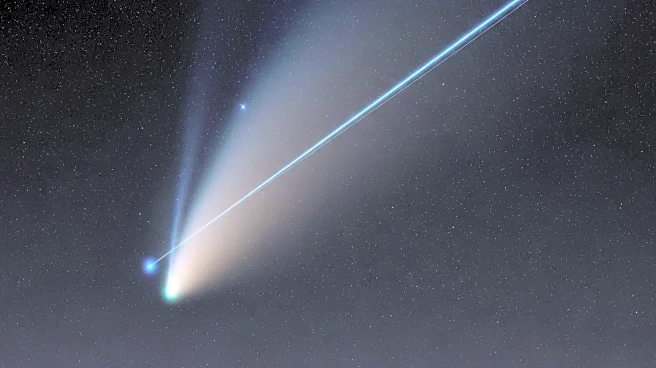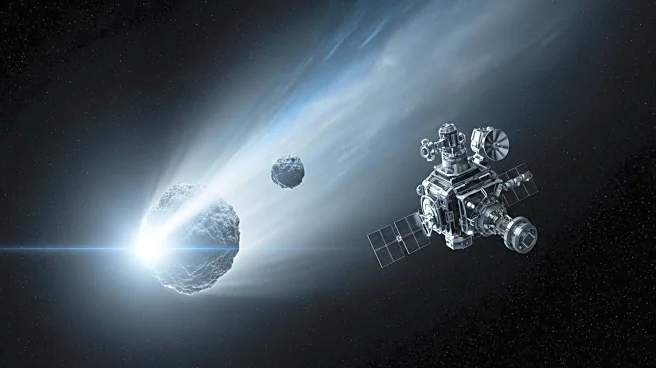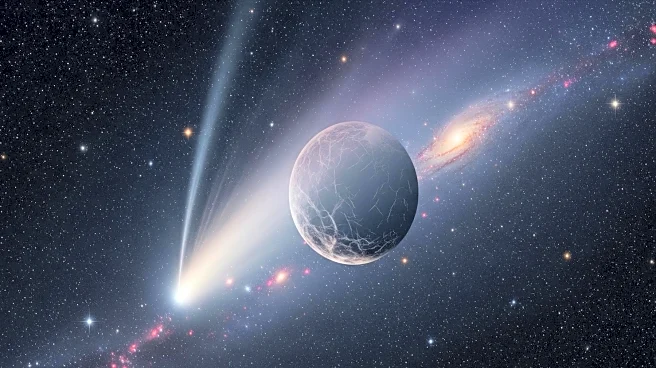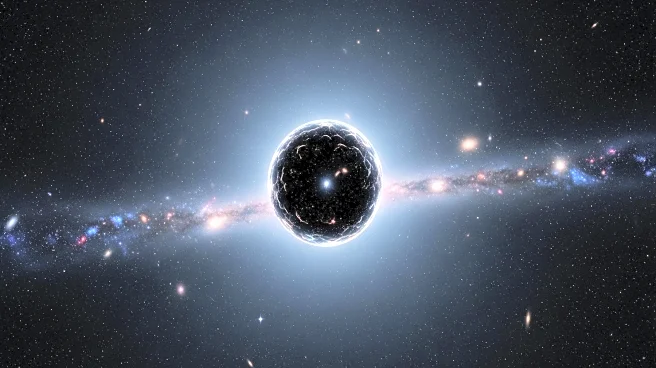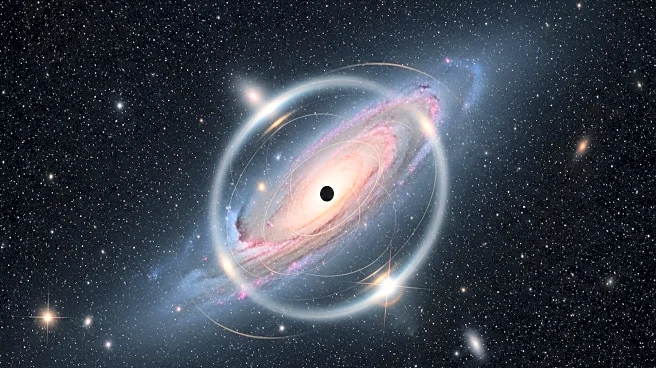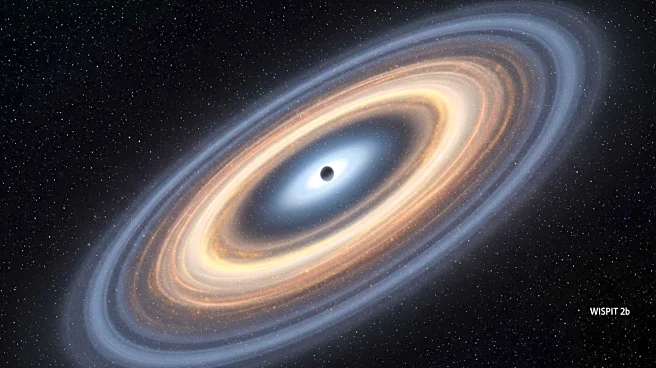What's Happening?
Astronomers have introduced a new theory suggesting the existence of a hidden Earth-sized planet, dubbed 'Planet Y,' within the solar system. This hypothetical planet is believed to be located in the Kuiper Belt, a region beyond Neptune filled with asteroids, comets, and dwarf planets. The theory emerged from the analysis of the trajectories of 50 Kuiper Belt objects (KBOs), which showed a tilt of around 15 degrees compared to the rest of the solar system's planets. Researchers argue that this tilt could be explained by the gravitational influence of an undiscovered planet. The study, published in the Monthly Notices of the Royal Astronomical Society, posits that Planet Y could be much closer to Earth than the previously hypothesized Planet X, which is thought to be a gas giant. Despite the intriguing proposal, the existence of Planet Y remains unproven, and some experts are skeptical due to the limited sample size of KBOs analyzed.
Why It's Important?
The potential discovery of Planet Y could significantly alter our understanding of the solar system's structure and dynamics. If confirmed, it would add a new member to the planetary lineup, potentially increasing the count to ten planets. This discovery could provide insights into the formation and evolution of the solar system, particularly the Kuiper Belt region. The existence of such a planet could also impact theories regarding gravitational influences on KBOs and other celestial bodies. However, skepticism remains due to the small sample size used in the study, and further observations are needed to validate the theory. The Vera C. Rubin Observatory, with its advanced capabilities, may play a crucial role in confirming or refuting the existence of Planet Y in the coming years.
What's Next?
Researchers anticipate that the Vera C. Rubin Observatory, now operational in Chile, could help identify Planet Y or Planet X within the next few years. The observatory's extensive sky surveys are expected to uncover thousands more KBOs, potentially providing the data needed to support or disprove the existence of these hypothetical planets. If Planet Y is within the observatory's field of view, it could be directly observed, offering definitive evidence. Conversely, if no supporting data is found, the theories may be dismissed. The ongoing search for additional KBOs and the analysis of their trajectories will be critical in resolving this cosmic puzzle.
Beyond the Headlines
The proposal of Planet Y raises broader questions about the nature of the solar system and the potential for undiscovered celestial bodies. It challenges existing models and encourages the exploration of alternative explanations for gravitational anomalies observed in the Kuiper Belt. The theory also highlights the limitations of current observational technologies and the need for continued advancements in astronomical research. Ethical considerations regarding the allocation of resources for such exploratory missions may arise, as the search for new planets competes with other scientific priorities.
